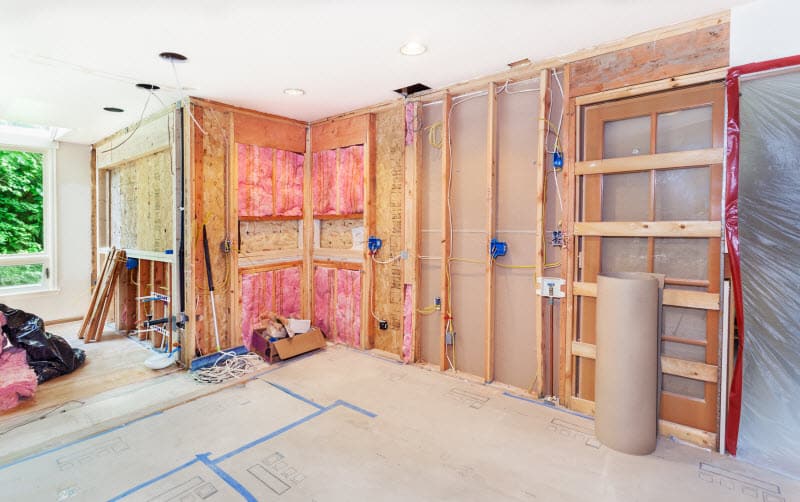When it comes to insulating your home, these is no one-size-fits-all solution. How and where insulation is installed, if the home is new construction or an existing home, and the R-value of the insulation material used combine to determine just how effective the insulation will be in keeping your home comfortable.
In the winter, heat flows from heated living spaces in your home to colder spaces such as attics and garages that are not heated. In summer months, heat from outdoors flows into the cooler, air-conditioned areas of your home. Proper insulation in a home is necessary to reduce heat flow – both in and out – and keep your home warm in the winter and cool in the summer. An added benefit of a well-insulated home is improved energy efficiency and reduced monthly heating and cooling bills.
Different areas of your home – main living spaces, attic, basement, floor, crawl space – require a different type of insulation. Another factor, the R-value, also comes into play. The R-value is the rating of how much resistance to heat flow a specific insulating material has, and is determined according to the type, thickness, and density of the insulation. A higher R-value rating means a higher level of effectiveness of the insulation.
The U.S. Department of Energy provides recommendations for R-values based on the type of home, the regional climate where the home is located, the type of heating/cooling system in the home (gas, heat pump, oil, electric), and the area to be insulated. The list that follows explains a variety of insulation types and where they are most typically used.
Types of Insulation
- Blanket insulation in batts and rolls: The material type can be fiberglass, mineral wool, or plastic or natural fibers. Blanket insulation is used with unfinished walls, floors, and ceilings.
- Foam board or rigid foam: This material type can be polystyrene or polyurethane. This insulation can be used with unfinished walls, floors, ceilings, and low-slope roofs.
- Blown-in/loose-fill: This insulation material can be cellulose, fiberglass, or mineral wool. Blown-in insulation is good for adding insulation to existing finished areas or areas that have an irregular shape or are hard to reach. Sprayed foam insulation is another type used in these situations.
- Concrete block: This is foam board insulation that gets placed on the outside of an unfinished wall of a new construction home or inside a wall in an existing home.
Other types of insulation include insulating concrete forms (ICFs), reflective insulation systems, and structured insulated panels (SIPs). Each is unique in the type of material used and optimum locations for use. If you are thinking of increasing or improving the insulation in your home, speak with a professional contractor who can explain the full variety of insulation types and recommend the best for your situation.
Sovereign Construction Services is a full-service building and remodeling company. Owner Steve Rush understands all types of insulation and where they are best used. Call him today to learn more about how you can improve the energy efficiency in your home with insulation. He can be reached at 610-639-2986. (Note: the U.S. Department of Energy website, energy.gov, was the source for the information provided in this article.)

